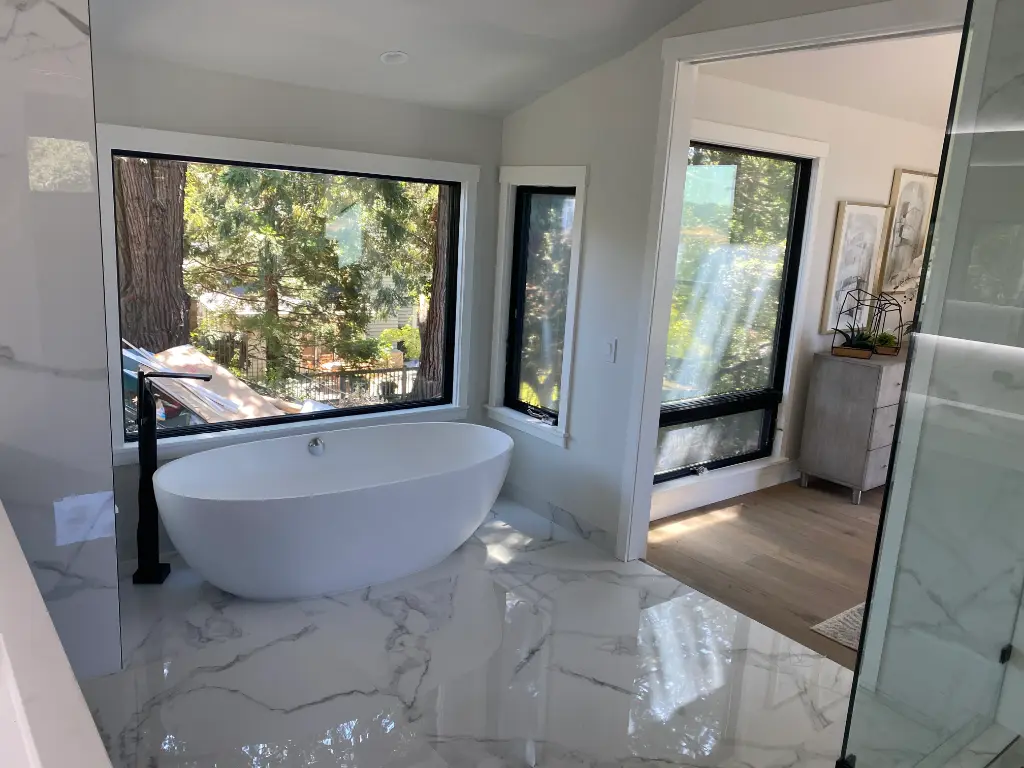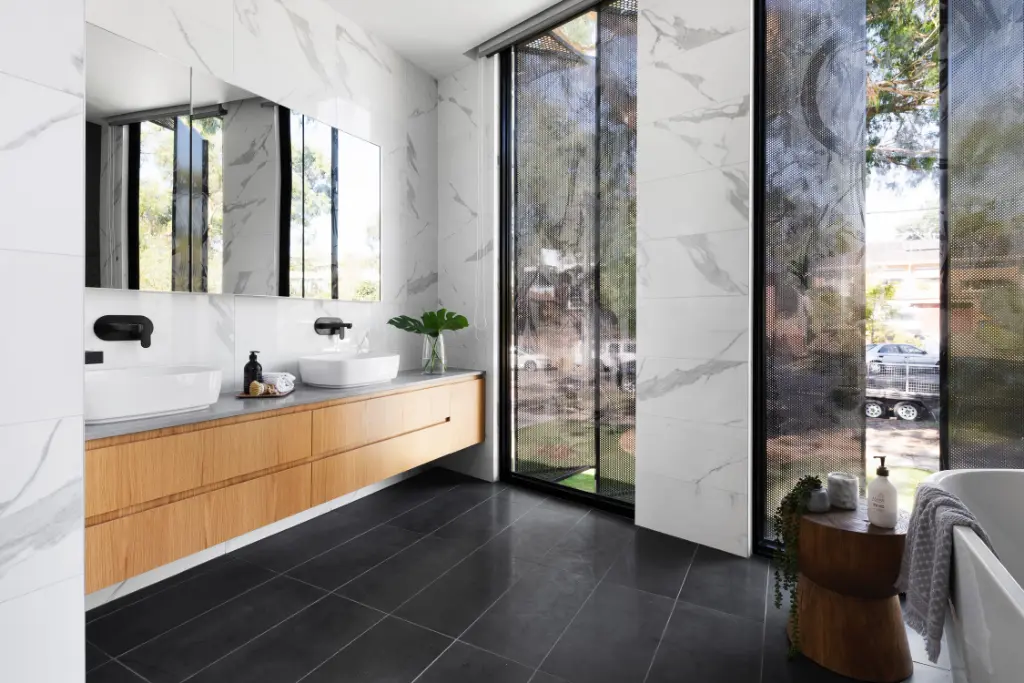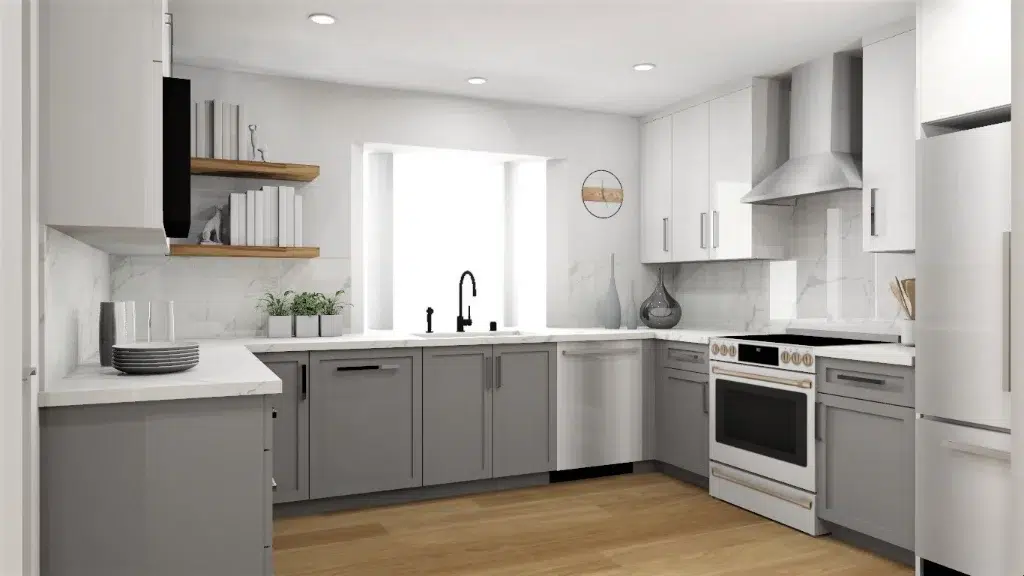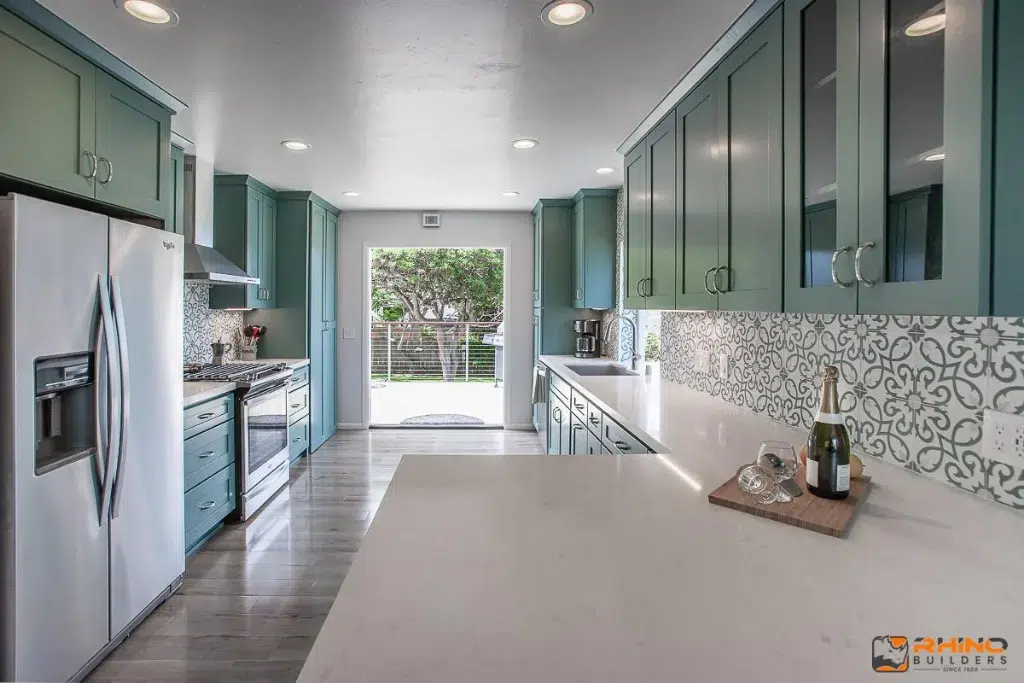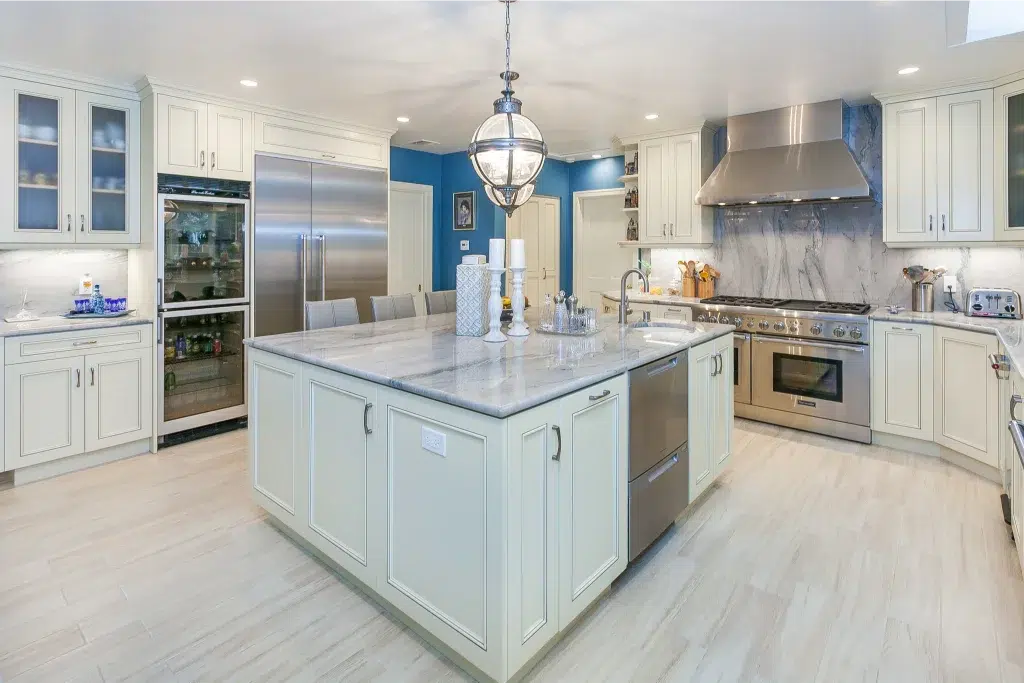Are you considering building an Accessory Dwelling Unit (ADU) on your property? ADUs are becoming increasingly popular to add extra living space for family members or rental income. However, building an ADU can seem overwhelming, especially if you need to familiarize yourself with construction and zoning regulations.
In this complete step-by-step guide, we will walk you through building an ADU from start to finish. From choosing a design and obtaining permits to selecting materials and hiring contractors, we’ll provide expert advice to help you navigate every aspect of this project.
Many homeowners are looking towards creating additional living spaces within their property. One trending and effective solution is building an Accessory Dwelling Unit (ADU). ADUs, often called granny flats, in-law units, or backyard cottages, provide an excellent opportunity to maximize your property’s potential, providing extra space or an additional income stream.
What is an ADU or additional dwelling unit?

An Accessory Dwelling Unit (ADU) is a self-contained, supplementary living space that shares the same land as the primary residence. This type of residential unit is distinct from the main house, offering a degree of independence that can be pretty appealing. ADUs are even permissible in some jurisdictions on properties zoned for multiple families.
ADUs are known by many other names, reflecting their flexibility and adaptability. You might hear them referred to as backyard cottages, laneway houses, granny flats, garage apartments, carriage houses, basement apartments, mother-in-law units, in-law units, secondary suites, English basements, or accessory apartments, depending on regional and cultural vernacular.
Accessory Dwelling Units (ADUs) come in various shapes and sizes, often dictated by the existing property layout, local regulations, and homeowner preferences. Here are the different types of ADUs you might encounter:
- Detached ADU: These are stand-alone structures separate from the main house. They are often built in the backyard, called backyard cottages or granny flats. They can be made from scratch or by converting an existing structure like a garage or a shed.
- Attached ADU: This type of ADU is an extension to the existing house. It might be a room over the garage, a sunroom, or a new wing added to the house. This option can be ideal when yard space is limited.
- Interior ADU: Also known as an in-law suite, this ADU is carved out from the existing space within the main house. It could involve converting a basement, attic, or large room into a self-contained living unit.
- Garage Conversion ADU: involves converting an existing attached or detached garage into an ADU. The entire structure can be transformed into living space, or, in some cases, just the upper level is converted (if applicable).
- Above-Garage or Carriage House ADU: These are built on top of a detached garage. This type is prevalent in urban areas with limited ground space.
- Junior ADU (JADU): This is a relatively new category in some regions. A JADU is typically a smaller unit created within the walls of an existing home, often by converting a bedroom. They have efficient kitchens and may share a bathroom with the main house.
Remember, the type of ADU that will work best for you depends on many factors, including your property’s layout, budget, and local regulations. Always ensure you fully understand your chosen ADU type’s legal and practical implications before beginning construction.
Constructing an ADU is far more complex than adding an extra room to your home. Each ADU must include a fully-equipped kitchen and a bathroom, which necessitates careful consideration of several crucial factors:
- Plumbing systems to ensure appropriate water supply and waste disposal.
- Mechanical elements include heating, ventilation, and air conditioning.
- Gas and Electric infrastructure to power the unit safely and effectively.
- Appliances such as refrigerators, cooktops, and ovens, must be integrated into the design.
A fully functional kitchen distinguishes ADUs from other supplementary housing, underlining their status as a complete, self-contained living space.
What You Should Think About Before Building an ADU
Constructing an Accessory Dwelling Unit (ADU) on your property can provide numerous benefits but involves significant planning and decision-making. Here are some essential factors you should consider before embarking on this project:
- Local Zoning Laws and Regulations: Not all areas permit the construction of ADUs. Understanding your local zoning laws, building codes, and homeowners’ association rules is essential. These regulations can dictate the size, location, and design of the ADU and whether you can rent it out.
- Costs and Financing: Building an ADU is a significant financial undertaking. Costs can include design, construction, permits, utility connections, and landscaping. Having a comprehensive budget and plan for financing the project is essential. This might involve saving, taking out a loan, or using a home equity line of credit.
- Design and Function: Consider what you want to achieve with the ADU. Will it be a space for family members, a rental unit, or a home office? The intended function will influence the design, which includes factors like size, layout, accessibility features, and aesthetics.
- Utilities and Infrastructure: An ADU requires its own infrastructure, including electricity, gas, water, and sewage. You’ll need to plan for these connections in your design and budget.
- Construction Process: Building an ADU can be disruptive. Consider how construction will affect your daily life and your neighbors. You’ll also need to decide whether to manage the project yourself or hire a contractor.
- Long-Term Maintenance: Like your primary home, an ADU requires ongoing maintenance and potential repairs. Consider the cost and time needed for these tasks.
- Potential Return on Investment: If you plan to rent out the ADU, consider the potential income against the initial cost of building and ongoing expenses. Additionally, the presence of an ADU can increase your property value.
- Tax Implications: There may be tax implications depending on your location and how you use the ADU. It’s wise to consult a tax professional to understand these potential impacts.
- Privacy: An ADU will bring additional people onto your property. Consider how this will impact your privacy and that of your neighbors.
By carefully considering these factors, you can decide whether building an ADU is the right choice for you.
Step-by-Step Guide Process Building Accessory Dwelling Units (ADUs)

Building an Accessory Dwelling Unit (ADU) is an excellent way to maximize the utility of your property. However, it’s not a project to be taken lightly. Several crucial considerations need to be addressed before you break ground.
Step-by-step through the process of building an ADU. From planning to finishing touches, we’ve got you covered.
Step 1: Understand the Basics
Before you start, it’s essential to understand what an ADU is. An ADU is a secondary housing unit on a single-family residential lot. It can be attached to the primary house, like an above-the-garage unit, or a stand-alone structure, like a tiny house in the backyard. ADUs typically include a kitchen, bathroom, and sleeping area.
Step 2: Familiarize Yourself with Local Regulations
Local building codes and regulations play a significant role in your ADU project. Research local zoning laws, building codes, and homeowner association rules that could affect your project. These regulations may include limits on size, location, parking requirements, and rental rules. Consult with a local planning officer or real estate attorney if necessary.
Step 3: Determine the Type of ADU You Want to Build
ADUs come in various forms, including interior, attached, or detached. Your choice will depend on your property’s size, layout, budget, and the intended use of the ADU.
Step 4: Draft a Budget
An essential step in any construction project is budgeting. Costs can vary greatly depending on the type of ADU, its size, amenities, and local construction costs. Also, account for fees like permits, utility hookups, and potential upgrades to your property’s infrastructure.
Step 5: Design Your ADU
Once you have your budget, start designing your ADU. Consider hiring a professional architect or designer for this step. They can help you maximize space, ensure compliance with codes, and help you achieve the aesthetic you desire. Ensure the design includes amenities like a small kitchen, bathroom, and living/sleeping area.
Step 5: Design Your ADU
Once you have your budget, start designing your ADU. Consider hiring a professional architect or designer for this step. They can help you maximize space, ensure compliance with codes, and help you achieve the aesthetic you desire. Ensure the design includes amenities like a small kitchen, bathroom, and living/sleeping area.
Step 6: Apply for Permits
With your design, you can now apply for the necessary building permits. The process may vary based on local regulations but typically includes submitting your design plans, completing an application, and paying a fee. Receiving approval may take several weeks or even months, so be patient.
Step 7: Hire a Contractor
Find a reputable contractor experienced in building ADUs. Request quotes, check references, and review past projects to ensure they fit your project correctly. Once you’ve chosen a contractor, draw up a contract that details the project’s scope, timeline, and payment schedule.
Step 8: Begin Construction
With permits approved and a contractor hired, it’s time to start construction. Be prepared for potential delays due to weather, unforeseen construction issues, or materials shortages. Regularly communicate with your contractor to stay updated on progress and address any concerns promptly.
Step 9: Interior Finishes and Fixtures
Once the basic structure is complete, you can move on to the interior finishes. This includes flooring, painting, and installation of cabinets and fixtures. Make sure these elements align with your overall design scheme and budget.
Step 10: Install Utilities
Your ADU will need power, water, and potentially gas. Depending on local regulations, you can extend your current utilities to the ADU, or you may need to set up separate utility connections. Consult with your contractor or a utility expert to determine the best approach.
Step 11: Inspection and Certificate of Occupancy
Before the ADU is ready for use, it will likely need to pass a final inspection to ensure it meets all local building codes and regulations. Once it passes, you should receive a Certificate of Occupancy, officially declaring the unit safe for habitation.
Step 12: Landscaping
Consider the exterior space around your ADU. Add a path, a patio, or some greenery if it’s a detached unit. Thoughtful landscaping can add value and make the ADU more appealing, especially if you plan to rent it out.
Step 13: Furnish and Decorate
The final step! Furnishing and decorating your ADU will transform it from a house to a home. Whether you are planning to rent it out, use it as a guest house, or for a family member, make it comfortable and inviting. Remember to keep the space functional and avoid clutter, as ADUs are generally smaller than primary homes.
Step 14: Rent or Move in!
With everything done, it’s time to enjoy the fruits of your labor. You can now rent out your ADU, move in, or welcome your guests or family. Be sure to understand local laws if you’re planning to rent, including any tenant rights and your responsibilities as a landlord.
Building an ADU is a significant project that requires planning, resources, and patience, but the benefits can be substantial. Whether you’re looking for a way to house a family member, earn extra income, or simply make the most of your property, an ADU can be a fantastic solution. By understanding local regulations, carefully planning and designing, and working with professionals, you can make your ADU project a success.
What Permits Do You Need To Build an ADU?
The permits required for building an Accessory Dwelling Unit (ADU) will vary based on your local jurisdiction and the specific characteristics of your project. However, there are some common types of permits you might need:
- Building Permit: This is generally the primary permit required for any new construction or major renovation project. It confirms that your plans meet local safety and structural integrity codes.
- Zoning Permit: This permit verifies that your project complies with local zoning laws, which can dictate the size, location, and design of an ADU.
- Electrical Permit: If your project involves installing or modifying electrical systems, you’ll likely need an electrical permit. This ensures that all electrical work is up to code.
- Plumbing Permit: Similar to the electrical permit, a plumbing permit is typically required for any project that involves installing or altering plumbing systems.
- Mechanical Permit: If your ADU includes heating, ventilation, or air conditioning systems, you may need a mechanical permit.
- Grading Permit: If your project involves significant changes to the landscape or topography of your property, a grading permit may be required.
- Fire Safety Inspection: Sometimes, you may need to pass a fire safety inspection to ensure your ADU meets local fire codes.
- Historic Review Permit: If your property is in a historic district, you may need a special permit to ensure your project aligns with local historic preservation guidelines.
- Environmental Impact Assessment: Depending on your local regulations, you may need an environmental impact assessment if your ADU could potentially impact local wildlife, water sources, or other environmental factors.
Remember that permitting processes can be complex and time-consuming. It’s always a good idea to consult with a local building professional or your local planning or building department to understand the specific requirements in your area. Sometimes, you may also need to hire a licensed architect or contractor to prepare your permit applications.
How long does building an ADU take?
The journey from the initial consultation with a designer to the moment you set foot in your completed Accessory Dwelling Unit (ADU) typically spans a period of 12 to 18 months. Several factors, including the availability of materials and skilled tradespeople in your locale, can influence this timeline.
Constructing an ADU is a meticulous process that calls for various specialized professionals. These experts, each proficient in their unique domain, contribute to different project stages. This can range from laying the foundation to implementing the electrical wiring to fitting the cabinets.
The sequence of these phases is dictated by the need for each to undergo individual city inspections, ensuring adherence to safety and quality standards. Therefore, the construction timeline dramatically depends on these skilled workers’ efficiency and availability. This progression of specialized work, inspections, and approvals establishes your ADU’s construction’s overall rhythm and pace.
What are the advantages of a California ADU?
Accessory Dwelling Units (ADUs) offer many benefits, making them an appealing housing option in California. Firstly, they present an affordable construction alternative as they negate the need to purchase additional land, create substantial new infrastructure, build structured parking, or install elevators. This cost-effectiveness also extends to their construction process, as they are typically built using economic wood frame construction, making them significantly cheaper than homes in new multifamily infill buildings.
Another substantial advantage of ADUs is their potential to generate a steady source of income for homeowners, offering a financially viable way to utilize property space. Their design and structure afford a unique blend of proximity and privacy, making them ideal for extended families living near each other without compromising their personal space.
Furthermore, the living space provided by ADUs is often comparable to many newly-constructed apartments and condominiums, making them well-suited to a diverse range of occupants, including couples, small families, friend groups, young individuals, and seniors. The flexible nature of ADUs allows homeowners to share independent living areas with others, providing an ideal environment for seniors to age in place while receiving the necessary care. All these factors combine to underline the multi-faceted appeal of ADUs as a residential choice.
Choose Rhino Builders To Start Your ADU Process
Whether you’re considering an Accessory Dwelling Unit (ADU) for extra space or potential rental income, the team you choose to bring your vision to life is one of your most important decisions. With Rhino Builders, you can rest assured that your ADU project is in experienced, capable hands.
Rhino Builders is a full-service contractor with years of experience in the construction industry, including a strong track record with ADUs. We offer customized designs, quality construction, transparent communication, a full-service offering, and satisfied customers. We also understand these projects’ unique challenges, from navigating local regulations to optimizing smaller spaces. We offer customized designs to suit your needs, property, and budget.
We at Rhino Builders use top-notch materials and proven construction techniques to ensure your ADU is beautifully designed and built to last. Transparent communication is key to any successful construction project, and Rhino Builders is committed to keeping you informed every step of the way.
Don’t hesitate to reach out and book your complimentary consultation with us today.

